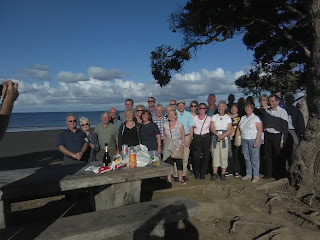Hello again from Siem Reap, our last day here, coming to the end of a fabulous 3 weeks... the weather is so nice and warm here .. not looking forward to heading back to the UK on Monday .. so cold ...brrr.
The last day of Temples today, but saved the best until last, Banteay Srei and Ta Prohm. Neither as large as Angkor Wat, but still as important.
Banteay Srei is a 10th century Cambodian temple dedicated to the Hindu god Shiva. Banteay Srei located in the area of Angkor in Cambodia, it lies near the hill of Phnom Dei, 25 km (15 miles) north-east of the main group of temples that once belonged to the medieval capitals of Yasodharapura and Angkor Thom. Banteay Srei is built largely of red sandstone, a medium that lends itself to the elaborate decorative wall carvings which are still observable today. The Banteay Srei buildings themselves are miniature in scale, unusually so when measured by the standards of Angkorian Construction. These factors have made the Banteay Srei temple extremely popular with tourists, and have led to its being widely praised as a “precious gem”, or the “jewel of Khmer art."
The design of Ta Prohm is that of a typical "flat" Khmer temple (as opposed to a temple-pyramid or temple-mountain, the inner levels of which are higher than the outer). Five rectangular enclosing walls surround a central sanctuary. Like most Khmer temples, Ta Prohm is oriented to the east, so the temple proper is set back to the west along an elongated east-west axis. The outer wall of 1000 by 650 metres encloses an area of 650,000 square metres that at one time would have been the site of a substantial town, but that is now largely forested. There are entrance gopuras at each of the cardinal points, although access today is now only possible from the east and west. In the 13th century, face towers similar to those found at the Bayon were added to the gopuras. Some of the face towers have collapsed. At one time, moats could be found inside and outside the fourth enclosure.
The three inner enclosures of the temple proper are galleried, while the corner towers of the first enclosure form a quincunx with the tower of the central sanctuary. This basic plan is complicated for the visitor by the circuitous access necessitated by the temple's partially collapsed state, as well as by the large number of other buildings dotting the site, some of which represent later additions. The most substantial of these other buildings are the libraries in the southeast corners of the first and third enclosures; the satellite temples on the north and south sides of the third enclosure; the Hall of Dancers between the third and fourth eastern gopuras; and a House of Fire east of the fourth eastern gopura. The trees growing out of the ruins are perhaps the most distinctive feature of Ta Prohm, and "have prompted more writers to descriptive excess than any other feature of Angkor." Two species predominate, but sources disagree on their identification: the larger is either the silk-cotton tree(Ceiba pentandra) or thitpok Tetrameles nudiflora, and the smaller is either the strangler fig(Ficus gibbosa). or Gold Apple (Diospyros decandra). Indulging in what might be regarded as "descriptive excess," Angkor scholar Maurice Glaize observed, "On every side, in fantastic over-scale, the trunks of the silk-cotton trees soar skywards under a shadowy green canopy, their long spreading skirts trailing the ground and their endless roots coiling more like reptiles than plants." The temple of Ta Prohm was used as a location in the film Tomb Raider. Although the film took visual liberties with other Angkorian temples, its scenes of Ta Prohm were quite faithful to the temple's actual appearance, and made use of its eerie qualities.
 |
| Banteay Srei - Main Entrance |
 |
| Banteay Srei - overview |
 |
| Banteay Srei - Temple |
 |
| Banteay Srei - Stonework |
 |
| This musical group are all victims of land mines |
 |
| Ta Prohm - The Jungle Temple |
 |
| Ta Prohm - Temple Entrance |
 |
| The Tree Roots - Remember "Tomb Raider" |
 |
| Tomb Raider |











Comments
Post a Comment